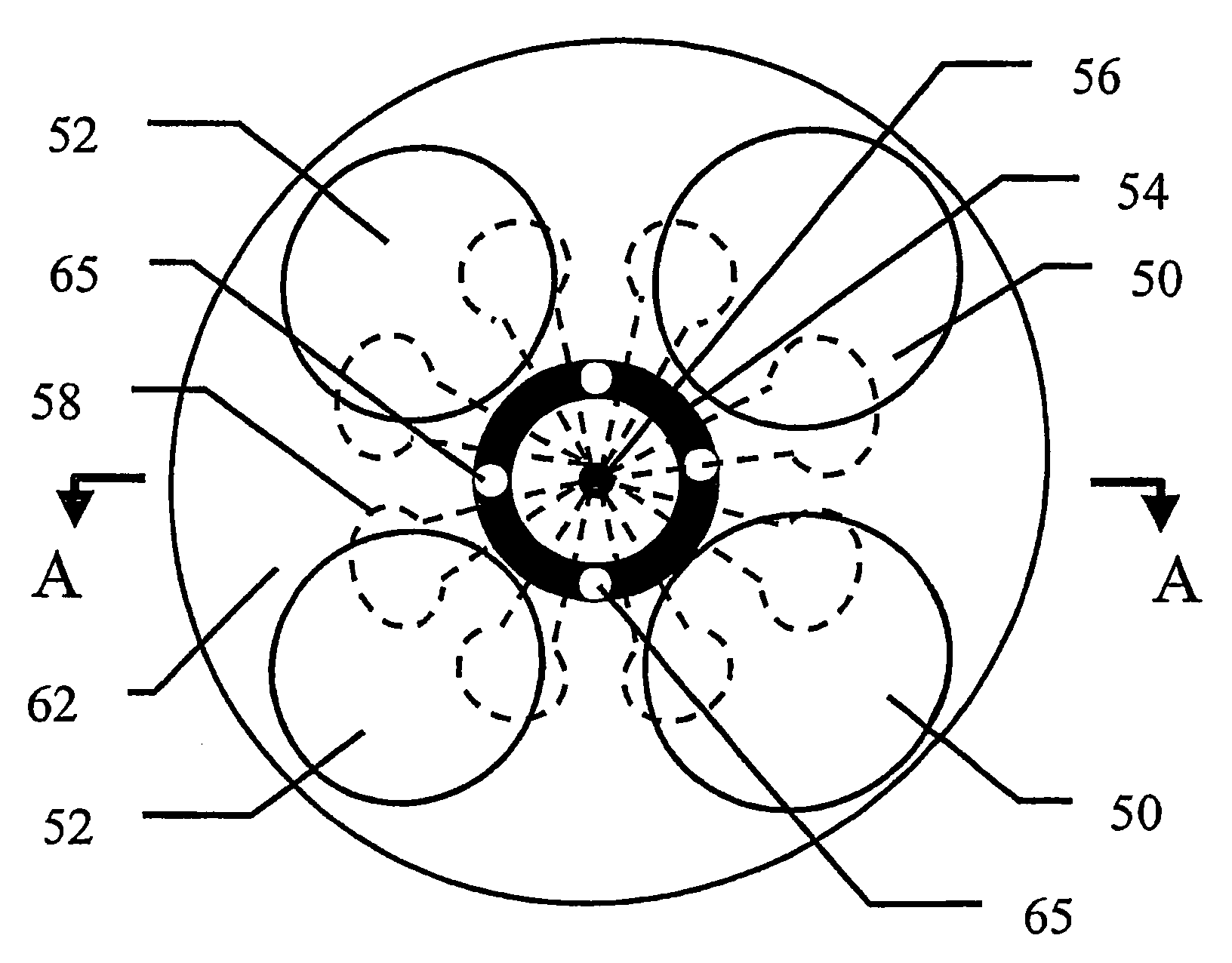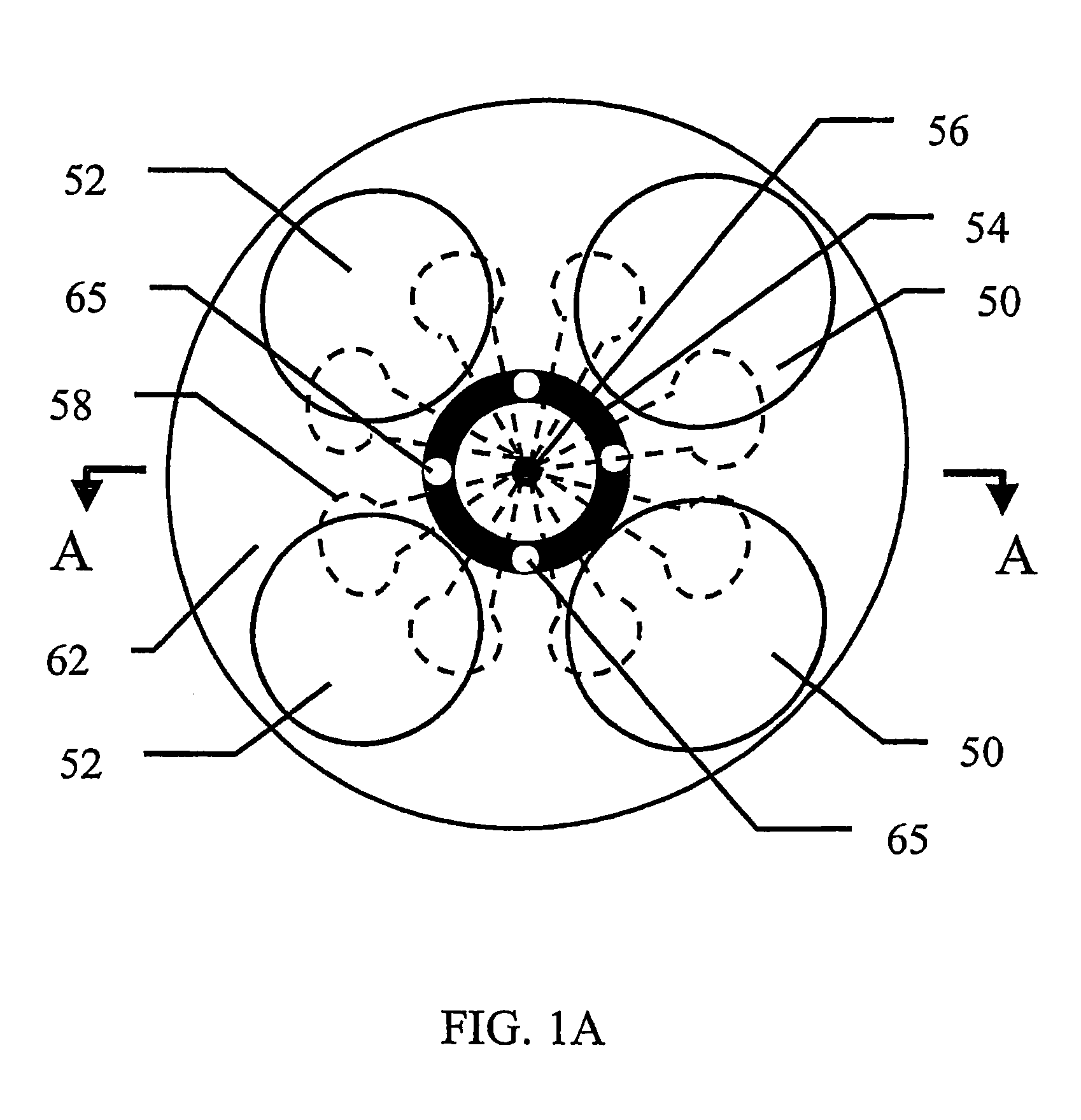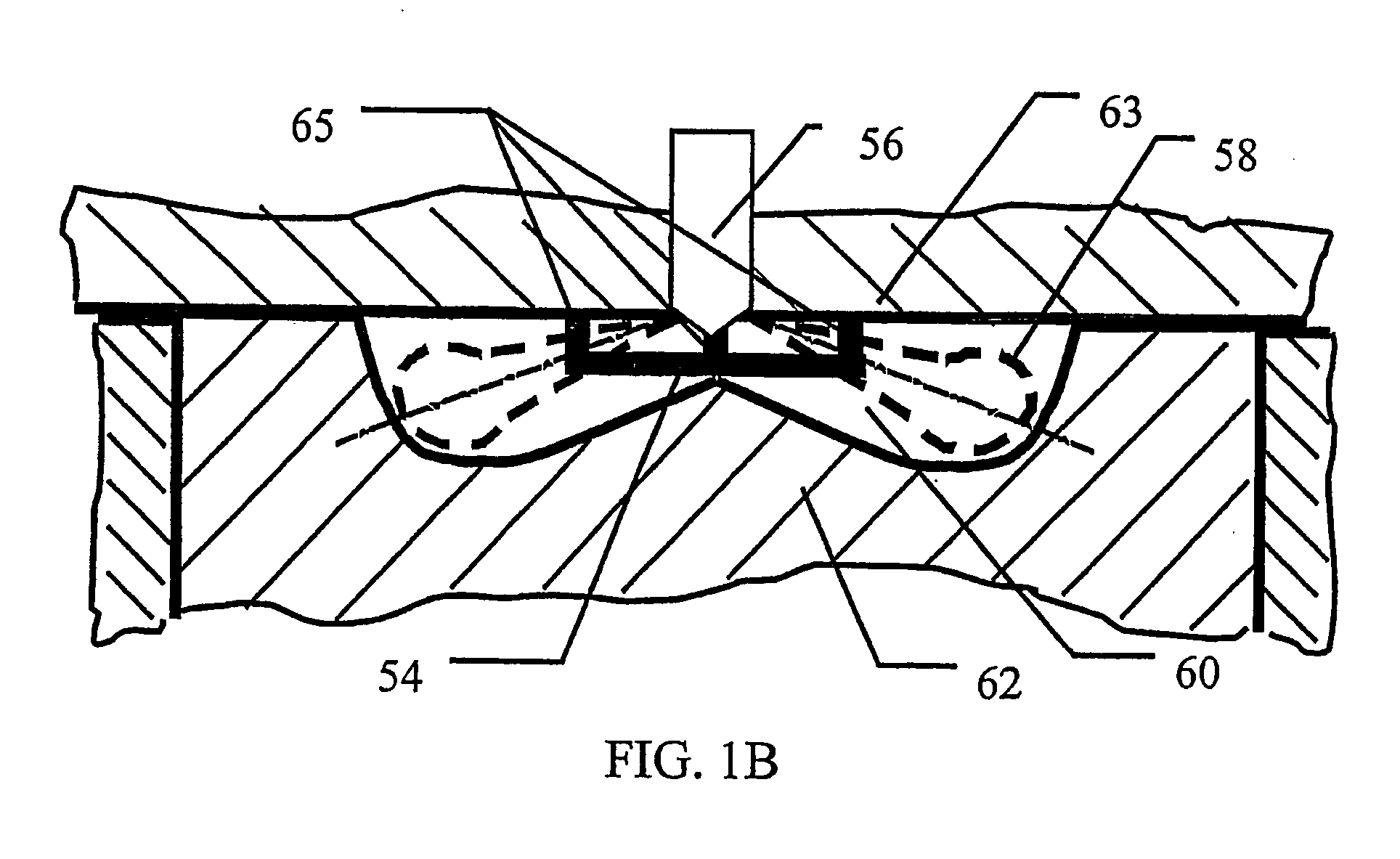Glow ring ignition assist for internal combustion engine
a technology of internal combustion engine and ignition assist, which is applied in the direction of mechanical equipment, machines/engines, electric control, etc., can solve the problems of imperfect turbulence, insufficient environment of cylinders, and inability to provide the necessary environment for auto-ignition, etc., to achieve high auto-ignition temperature
- Summary
- Abstract
- Description
- Claims
- Application Information
AI Technical Summary
Benefits of technology
Problems solved by technology
Method used
Image
Examples
first embodiment
[0040]the subject disclosure is shown with intake valves 50 and exhaust valves 52 outlined in the top view. Glow member 54, and the nozzle of fuel injection valve 56 are disposed within combustion chamber 60. Dashed lines outline the general shape of fuel jets 58. In FIG. 1b, piston 62 is at or near top dead center within combustion chamber 60. The side view of FIG. 1b also shows fire deck 63 along with posts 65, from which glow member 54 is supported.
[0041]Note that fuel jets 58 are shown demonstrating a typical spray pattern within the combustion chamber. FIGS. 1a and 1b show how fuel jets 58 can be directed to the proximity of glow member 54 so that at least a portion of the fuel in fuel jets 58 is heatable by the glow member to assist with igniting the fuel.
[0042]Referring to FIG. 1b, glow member 54 is shown affixed to fire deck 63. Glow member 54 is provided in this first embodiment at a distance from fire deck 63 and with a circumference that provides a hot surface area, which...
second embodiment
[0057]Referring to FIGS. 2a and 2b, a second embodiment is provided. In this embodiment, passive glow member 92 is affixed to piston 90 by posts 93. Again fuel jet 94 is outlined being injected into combustion chamber 96, which is partially defined by piston 90. FIG. 2a shows the location of intake valves 98 and exhaust valves 100. While the illustrated embodiment employs a four-valve arrangement (two intake valves and two exhaust valves), glow member 92 can be employed with a different number of intake or exhaust valves. Also shown by the illustrated embodiment is a combustion chamber with centrally positioned fuel injection valve 102 from which fuel jets 94 originate.
[0058]The second embodiment works in generally the same way as the first embodiment. However, as this second embodiment shows the glow member attached to piston 90 instead of fire deck 105, glow member 92 will only come into direct contact with fuel jets 58 when the piston is at or near top dead center. Therefore, it ...
third embodiment
[0060]Referring to FIG. 3, a third embodiment is provided wherein an active glow member is shown. Glow member 200 is attached to support member 202, which is, in turn, attached to injection valve sleeve 204. Fuel injection valve 206 is shown mounted inside injection valve sleeve 204. Injection valve nozzle orifices 208 are shown with fuel jets 210. Fuel eddies 212 are shown generated near and beyond support member 202 which acts as a barrier in the path of at least a portion of the fuel jet. Positive and negative power leads 214 and 216 are shown as well. Fire deck 218 defines one boundary of the combustion chamber from which protrudes injection valve 206.
[0061]In this preferred embodiment of actively heated glow member 200, support member 202 is attached to an end of injection valve sleeve 204 that extends below fire deck 218 and that projects into the combustion chamber. Glow member 200 is attached to support member 202 as shown, and support member 202 also projects into the combu...
PUM
 Login to View More
Login to View More Abstract
Description
Claims
Application Information
 Login to View More
Login to View More - R&D
- Intellectual Property
- Life Sciences
- Materials
- Tech Scout
- Unparalleled Data Quality
- Higher Quality Content
- 60% Fewer Hallucinations
Browse by: Latest US Patents, China's latest patents, Technical Efficacy Thesaurus, Application Domain, Technology Topic, Popular Technical Reports.
© 2025 PatSnap. All rights reserved.Legal|Privacy policy|Modern Slavery Act Transparency Statement|Sitemap|About US| Contact US: help@patsnap.com



